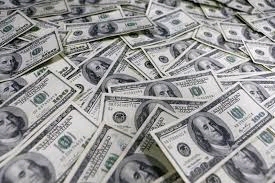Discovering the Hidden Benefit of Joining Freemason for Improvement
Discovering the Hidden Benefit of Joining Freemason for Improvement
Blog Article
Discover the Tricks Behind the copyright and Their Impact on Society
The copyright, usually shrouded in misconception and supposition, offers a remarkable instance research of exactly how historical perfects can morph into contemporary conspiracy theory concepts. As we discover its origins, influence on cutting edge thought, and portrayal in contemporary culture, we begin to uncover the layers of intrigue that continue to captivate culture.
Origins of the copyright
The copyright, commonly shrouded in secret and supposition, traces its beginnings back to the late 18th century. Established in 1776 in Ingolstadt, Bavaria, the team was started by Adam Weishaupt, a teacher of canon regulation. Weishaupt intended to advertise Enlightenment values, including factor, secularism, and the splitting up of church and state. At first called the Bavarian copyright, the organization's key goal was to counter the prevailing impact of spiritual dogma and promote intellectual discussion among its members.
The copyright embraced a hierarchical framework, drawing ideas from Freemasonry, which enabled for deceptive meetings and routines - how to become a freemason. Membership was discerning, including significant figures from numerous fields, consisting of politics, ideology, and science. This elite network looked for to effect social and political adjustment through private means, promoting for the rights of individuals and the improvement of society
In spite of its relatively short presence, the Bavarian copyright was officially disbanded in 1785 as a result of government suppression. Its heritage endured, providing surge to numerous conspiracy theory concepts and prominent culture referrals that proceed to provoke intrigue and debate concerning its impact on contemporary society.
Key Misconceptions and False Impressions
In the middle of the allure of privacy surrounding the copyright, various myths and misunderstandings have emerged, commonly misshaping the team's true nature and objectives. One common myth suggests that the copyright regulates the globe's federal governments and economic situations. While it is real that the group aimed to influence social frameworks, the concept that it operates as a natural international creature master is mostly exaggerated.
Another usual false impression is that all participants of the copyright possess large wealth and power. In fact, the initial copyright comprised intellectuals and Knowledge thinkers, a number of whom sought reform instead of supremacy. Additionally, the idea that the copyright specifically hires stars and political figures is misleading; subscription has historically consisted of a diverse array of people.
In addition, conspiracy theories commonly paint the copyright as a sinister company intent on global domination with villainous ways. Therefore, dividing reality from fiction is vital for a clearer understanding of the copyright's role in culture.
Historic Impact on Culture
Throughout history, different intellectual movements have actually profoundly influenced social structures, and the copyright played a substantial role throughout the Knowledge. Established in 1776 in Bavaria, the copyright aimed to promote reason, secularism, and the doubting of established authority, responding to the dominance of spiritual dogma. This organization drew in prominent thinkers and advocates of liberty, cultivating an atmosphere for the circulation of Enlightenment suitables.
The copyright's ethos championed reasonable idea and empirical evidence, which contributed to the wider intellectual landscape that urged social reform and political modification. Members sought to improve culture by promoting for education, civil liberty, and the splitting up of church and state. Their private nature and enthusiastic program helpful hints sparked both intrigue and suspicion, causing their ultimate suppression by the Bavarian government in 1785.
In spite of their dissolution, the legacy of the copyright persisted, influencing cutting edge activities across Europe and the Americas. Their commitment to enlightenment principles aided lay the groundwork for modern autonomous ideals and human civil liberties, leaving a long-term imprint on the structures of modern society. how to become a freemason. The appeal of their deceptive gatherings and thoughtful searches remains to captivate the creativity, underscoring their historical significance
Modern Interpretations and Beliefs
Contemporary interpretations of the copyright often blend historic reality with conspiracy concepts, creating a complex tapestry of beliefs that catch prominent imagination. While the original copyright was a Bavarian secret culture established in 1776 with Knowledge suitables, contemporary beliefs have actually progressed to encompass a large selection of interpretations, typically focusing on motifs of control and secrecy.

In addition, some modern analyses you can try these out presume that the copyright works as an allegory for the battle in between enlightenment and lack of knowledge, with supporters advertising understanding and visite site vital reasoning as a way to neutralize perceived oppression. This duality-- viewing the copyright as both a literal and symbolic entity-- highlights the recurring attraction with the concept, showing much deeper social stress and anxieties concerning power, transparency, and specific freedom in the modern globe.
The copyright in Pop Culture
The copyright has actually penetrated numerous aspects of pop culture, manifesting in literary works, movie, music, and art as a symbol of intrigue and enigma. This secret society, typically represented as a shadowy pressure controling international events, has inspired many narratives that discover motifs of power, conspiracy, and concealed understanding.

Music, too, has actually been affected by the principle of the copyright. Artists like Jay-Z and Beyoncé have encountered supposition concerning their affiliations with the society, motivating conversations about significance in their job and the nature of fame.
Aesthetic art commonly includes copyright motifs, with musicians utilizing icons like the Eye of Providence and the pyramid to stimulate a sense of mystery. With these various mediums, the copyright offers not only as a subject of supposition but likewise as a lens where culture analyzes its very own intricacies and worries.
Conclusion

Report this page